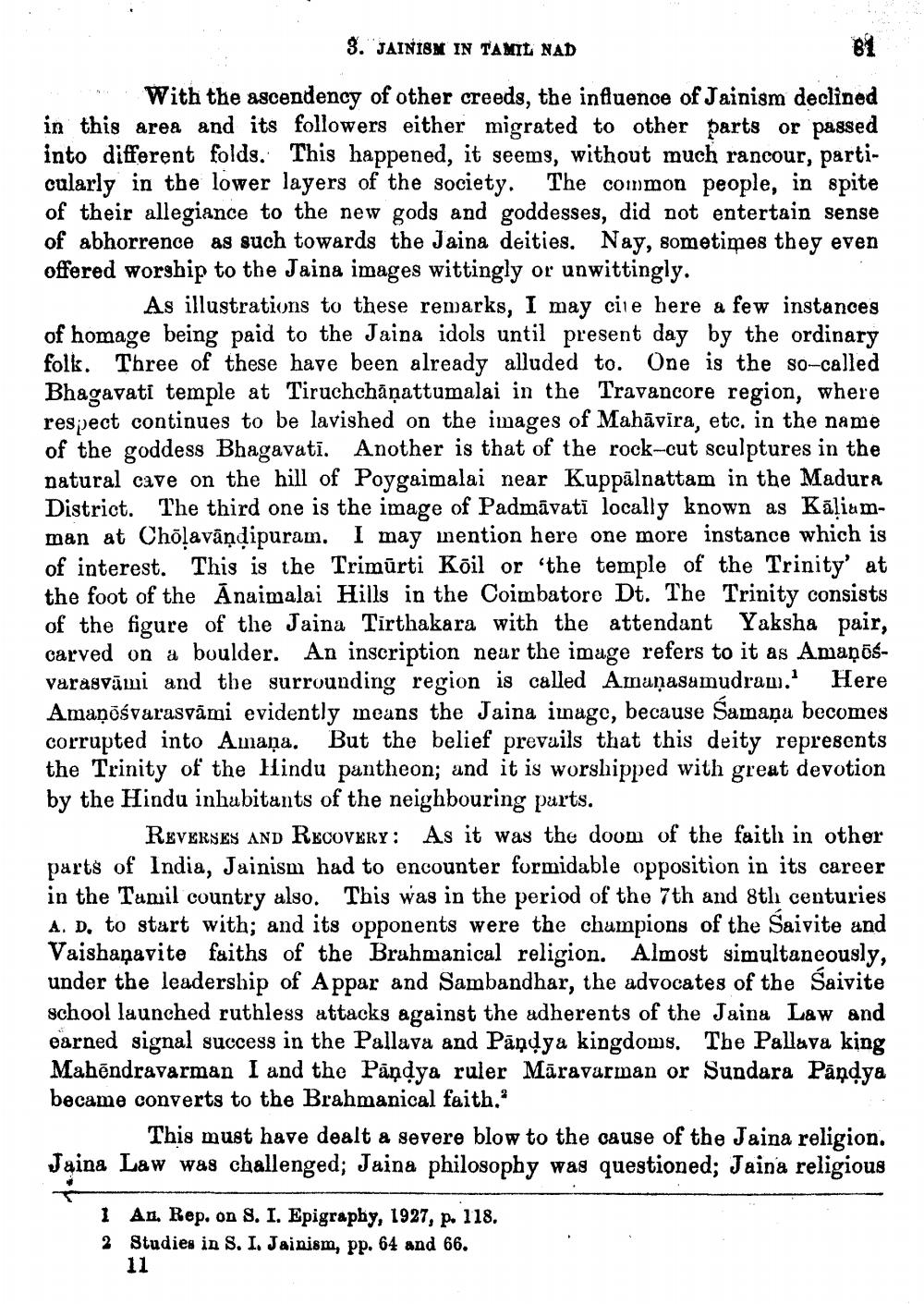________________
3. JAINISM IN TAMIL NAD
૪.
With the ascendency of other creeds, the influence of Jainism declined in this area and its followers either migrated to other parts or passed into different folds. This happened, it seems, without much rancour, particularly in the lower layers of the society. The common people, in spite of their allegiance to the new gods and goddesses, did not entertain sense of abhorrence as such towards the Jaina deities. Nay, sometimes they even offered worship to the Jaina images wittingly or unwittingly.
As illustrations to these remarks, I may cite here a few instances of homage being paid to the Jaina idols until present day by the ordinary folk. Three of these have been already alluded to. One is the so-called Bhagavati temple at Tiruchchaṇattumalai in the Travancore region, where respect continues to be lavished on the images of Mahavira, etc. in the name of the goddess Bhagavati. Another is that of the rock-cut sculptures in the natural cave on the hill of Poygaimalai near Kuppalnattam in the Madura District. The third one is the image of Padmavati locally known as Kaliamman at Chōlavandipuram. I may mention here one more instance which is of interest. This is the Trimurti Kōil or 'the temple of the Trinity' at the foot of the Anaimalai Hills in the Coimbatore Dt. The Trinity consists of the figure of the Jaina Tirthakara with the attendant Yaksha pair, carved on a boulder. An inscription near the image refers to it as Amaņōsvarasvami and the surrounding region is called Amanasamudram.' Here Amanösvarasvami evidently means the Jaina image, because Samana becomes corrupted into Amana. But the belief prevails that this deity represents the Trinity of the Hindu pantheon; and it is worshipped with great devotion by the Hindu inhabitants of the neighbouring parts.
REVERSES AND RECOVERY: As it was the doom of the faith in other parts of India, Jainism had to encounter formidable opposition in its career in the Tamil country also. This was in the period of the 7th and 8th centuries A. D. to start with; and its opponents were the champions of the Saivite and Vaishapavite faiths of the Brahmanical religion. Almost simultaneously, under the leadership of Appar and Sambandhar, the advocates of the Saivite school launched ruthless attacks against the adherents of the Jaina Law and earned signal success in the Pallava and Pandya kingdoms. The Pallava king Mahendravarman I and the Pandya ruler Maravarman or Sundara Pandya became converts to the Brahmanical faith."
This must have dealt a severe blow to the cause of the Jaina religion. Jaina Law was challenged; Jaina philosophy was questioned; Jaina religious
1 An. Rep. on S. I. Epigraphy, 1927, p. 118.
2 Studies in S. I. Jainism, pp. 64 and 66.
11




